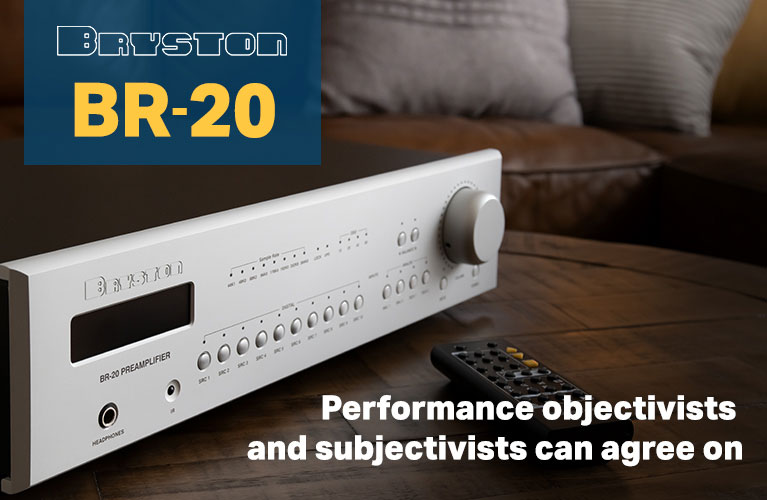Note: measurements taken in the anechoic chamber at Canada's National Research Council can be found through this link.
Back in December 2018, I launched a new regular feature on SoundStage! Hi-Fi. As I outlined in that inaugural column, the name “System One” could refer to “someone’s first system, or someone’s only system—or something else, depending on what’s covered that month. What won’t change is the theme . . . cost-effective, high-performing equipment that many people can afford.”
Four years later, in the conclusion to my last “System One” column of 2022, I stated: “Starting with the next installment of ‘System One,’ I’m going to take this column in an exciting direction. I’ll be focusing on the kind of traditional stereo setups that I don’t think any hi-fi writer has ever written about.”
That time has come. Before describing the component that’s the subject of this installment, I want to talk about how this column has evolved over the last four years, and where it’s going.
No limits!
When I created this column, I focused on complete systems up to $1000 (all prices in USD except where noted). My goal was to address readers who weren’t willing or able to spend a lot of money on hi-fi. Later, after finding wallet-friendly products that needed to be talked about here, I raised the ceiling to $1000 per component. Then I found other products worthy of coverage on “System One” that were priced even higher, so I wrote about them, but at the same time felt that I had to justify it.
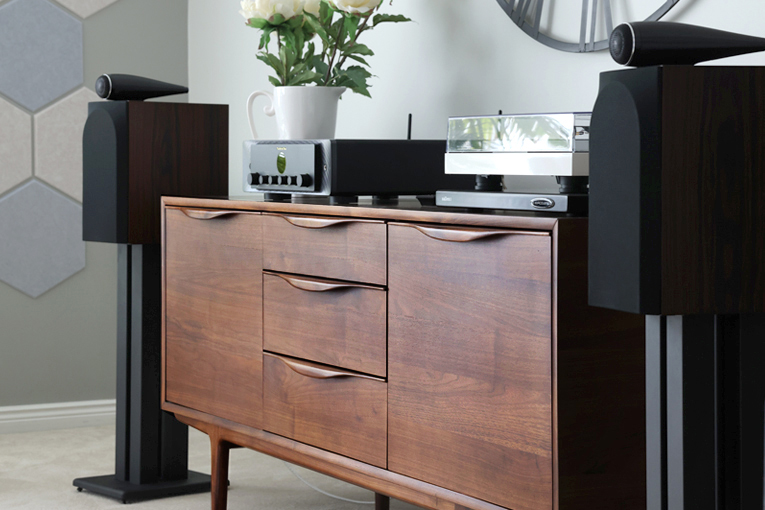
Now I’ve finally decided to write about whatever I deem appropriate, irrespective of price—to hell with arbitrary limits! Of course, I’ll write about budget-priced components wherever I can, so folks interested in affordable hi-fi shouldn’t feel abandoned. But henceforth, you could find pretty much anything else in this space.
Living spaces
Around the same time as I was thinking about abandoning price constraints, I realized that my main listening room isn’t the best space for reviewing all the components that show up here. That room is really big: 16′W × 36′L. Smaller speakers and lower-powered amplifiers should obviously be assessed in a smaller space.
Furthermore, my main listening room is dedicated exclusively to audio reviewing. It’s not used for casually hanging out or watching TV. Therefore, it’s not typical of the way many people set up and use their music systems. In fact, I’ve often criticized companies that use massive, specially built listening rooms with insane amounts of acoustical treatments to showcase equipment. Almost no one in the world has a room like that in their home.
The fact is that most people put their stereos in a living or family room, which means that the space is typically used for other purposes besides listening to music: watching TV, hanging out, entertaining guests, and maybe even eating. It so happens that the room I’ve always used for my “System One” setup is such a space. It’s my living room, which measures 14′W × 18′L and is pleasantly appointed with furniture. It’s a living space, not just a listening space.
A new mandate
As a result, I’ve not only eliminated the “System One” price ceiling, but I’ve also shifted the overall direction of this column. Henceforth, I’ll be taking a close-up look at components that are ideal for multipurpose spaces like my living room. The “System One” column will now be much closer in style to a formal review. The products discussed here will now qualify for SoundStage! Network awards. Previously, the components I wrote about on “System One” weren’t considered for awards unless they had been formally reviewed on one of the SoundStage! sites.
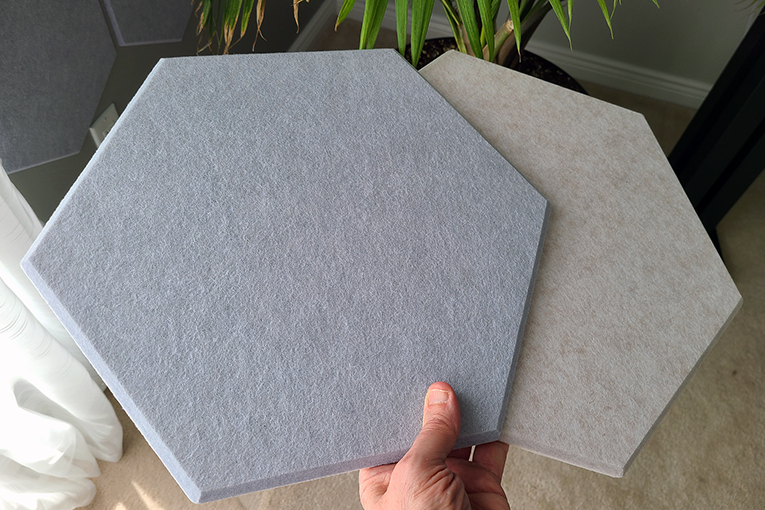
It’s important that you know that components are not placed willy-nilly in my living room. This is a living space, but also a serious listening space, with a dedicated wall for the audio system and some attractive BXI acoustical treatments to deal with “slap echo” issues that the bare walls were causing. If I find it beneficial, I may add even more treatments. But they’ll have to look good because this is the living room, and it’s used by everyone in my family. While this space might be more typical of real-life listening scenarios in terms of size and furnishings, the equipment I’m evaluating won’t be shortchanged.
With the new mandate for “System One” now mapped out, let’s have a drum roll for the first participant: the Bowers & Wilkins 705 S3 loudspeaker, priced at $3400 per pair, which is about $400 more than its predecessor cost. Diego Estan reviewed the 705 S2 on this site in 2019.
Speaker description
The 705 S3 is the largest and most expensive of the three standmount speakers in B&W’s mid-tier 700 lineup—mid-tier because the 700 series resides between the entry-level 600 and flagship 800 series. Below the 705 S3 are the less expensive 706 S3 and 707 S3 standmounts; above it are the more expensive 704 S3, 703 S3, and 702 S3 floorstanders.
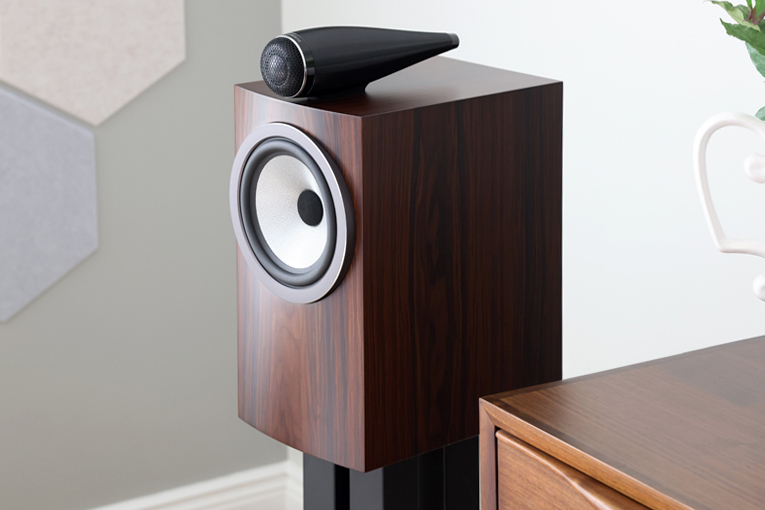
As the model name implies, this is the third iteration of the company’s 705 design, provided you don’t count the 705 Signature, which Diego also reviewed on this site. Priced at $4000 per pair, that model came out after the 705 S2 was released, but before the S3. The Signature was basically a souped-up version of the 705 S2, with mostly cosmetic enhancements, along with some updated crossover parts. The S3 has more substantial changes, many of which B&W claims have been trickled down from the current 800 line, now in its D4 incarnation.
Like the 705 S2 before it, the 705 S3 is a two-way, rear-ported design with a 1″ dome tweeter and a 6.5″ midrange-woofer: both are bespoke B&W designs. The crossover point isn’t shown in the specifications, but sensitivity is stated—88dB (2.83V/m). They seem to be the same, or almost the same, as the drivers used on the 705 S2; there are no outwardly obvious differences.
The tweeter is what B&W calls a Carbon Dome design. It combines a base of aluminum with carbon; this purportedly pushes the tweeter’s breakup frequency to 47kHz. The midrange-woofer’s cone is made from a material the company calls Continuum. This material replaced Kevlar in the 800 models and has now trickled down to the 700 and 600 lines. Apparently, Continuum’s breakup behavior is much better controlled than Kevlar’s.
Probably the most obvious change is the shape of the front baffle. On the new model, the baffle curves outward, adding a three-dimensional element; the previous model had a boringly flat front baffle. The curved baffle allows the midrange-woofer to protrude, just like the cone drivers on the flagship 800 models. According to Bowers & Wilkins, this improves dispersion—basically, the cabinet gets out of the way more completely. But I can’t see the protrusion having much (if any) effect on dispersion because of the fairly long lengths of the soundwaves produced by the midrange-woofer. Instead, I see the curved front as more of a cosmetic change—but a welcome one, because I think this version of the speaker looks better than its predecessors.
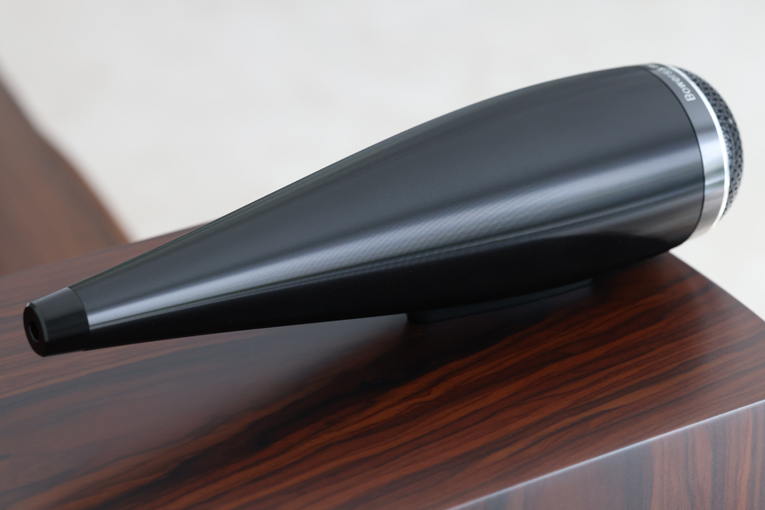
A less obvious change has to do with B&W’s iconic Tweeter-on-Top technology, which houses the tweeter in a milled-aluminum assembly that is decoupled from the main enclosure. This technology is featured on all 800-series models, but only on some of the 700s and none of the 600s. Yet there’s more to the technology than the placement and suspension of the tweeter housing. The tapered tube behind the driver is a Laurence Dickie invention that dates back to 1993; it first appeared on B&W’s Nautilus loudspeaker, which he designed. The shape of the tube, and the stuffing inside it, dissipate the rearward energy from the tweeter so that it doesn’t bounce back and disrupt the diaphragm as it’s radiating energy outward.
On the 705 S3, this tube has been lengthened and made pointier at its back end. Resembling an elongated pill, the tube on the 705 S2 looks too short and a tad awkward in comparison. But the improvement is more than visual. The new tube is said to lower the tweeter’s distortion, which I can believe, because any change to the tube can have a profound impact on the behavior of the driver attached to it.
The magnetically attachable grille that covers the midrange-woofer has changed too. The 705 S2 and Signature both came with standard-issue rectangular grilles. The S3’s grille is rectangular around its perimeter, but now it juts out and forms a half-moon shape around the portion that covers the top half of the midrange-woofer. This makes the speakers more attractive when the grilles are mounted. I left the grilles on the speakers for protection, but took them off to listen.
Finally, the binding posts on the back of the S3 look dramatically better than those used on the S2, which look chintzy in comparison. Does that make a big difference? Probably not, but it’s a nice improvement on what’s not an inexpensive speaker.

The dimensions of the 705 S3 are almost exactly the same as its predecessor’s. Excluding the tweeter assembly, the S2 measured 13.4″H × 7.8″W × 11.2″D, while the S3 measures 13.6″H × 7.6″W × 11.7″D.
The Gloss Black and Satin White finishes are carried over from the S2 range into the S3, but the Rosenut wood-veneer finish from the S2 line has been traded in for Mocha, which is also a wood veneer. My review samples had the Mocha finish, and they looked absolutely smashing in my room. That’s the finish I’d choose if I were to buy these speakers.
System setup
Along with the 705 S3 speakers, Bowers & Wilkins offered to send me the matching FS700-S3 stands, which cost $800 for the pair. I opted to use my own Monoprice Monolith 24″ stands, which retail for just $110 per pair. They worked well enough, but there are some good reasons for splurging on the FS700-S3s. You can bolt the FS700-S3 to the speaker, so the combination is more stable. Visually, a 705 S3 atop the FS700-S3 looks more cohesive. Finally, the FS700-S3 stand is better finished than the Monolith stand, which looks a little rough around the edges.
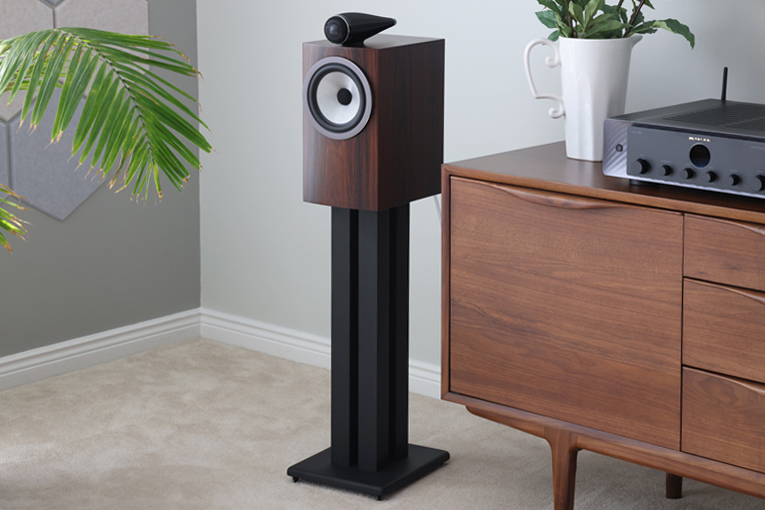
I connected the 705 S3s to a Marantz Model 40n streaming integrated amplifier ($2499) with a pair of QED XT25 speaker cables, which cost less than $100 when they were available. The 40n is rated at 70Wpc into 8 ohms, a good match to the 705 S3, which isn’t particularly power-hungry. A Pro-Ject Audio Systems X1 turntable with Pick it S2 cartridge ($1399, in CAD) was connected to the Marantz’s phono input with a Pro-Ject Connect it E phono cable.
The sound
When I first got the 705 S3s set up, only my 12-year-old son, who is really into music, was home. I pulled out my 1980 LP of Against the Wind, by Bob Seger and the Silver Bullet Band (Capitol SOO-12041), and played all of side 2. When it ended, he exclaimed, “That’s some really good music!”
I was glad he was impressed—I play these albums to introduce my kids to the music of my youth. But I also wanted to hear this album because I know it so well. Right from the first track, it was obvious that Bowers & Wilkins doesn’t just want you to see that tweeter in its aluminum housing, they want you to hear it too. Really hear it. In that respect, the 705 S3 is like every B&W speaker I’ve heard during the last five years. From the sound of the cymbals and guitar, I could tell the 705 S3s were about 2dB hotter across the treble region than I’m used to. That’s not a huge boost, but it is enough to be noticeable.
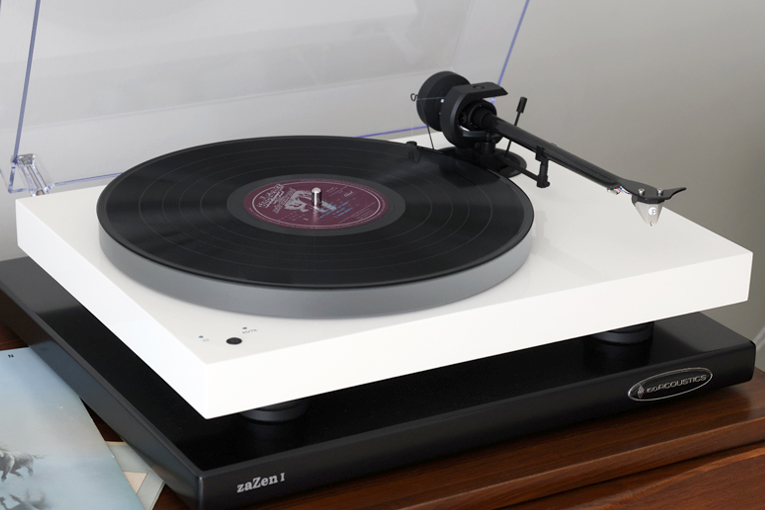
That wasn’t unlike the treble lift I heard when I had a pair of the flagship Bowers & Wilkins 805 D4s in my living room. That speaker is $8500 per pair, and hotter than what I’d consider neutral. But surprisingly, I wasn’t as bothered by the treble lift with the S3s as I had been with the D4s. It might have to do with subtle differences in voicing between the two models, or it might have to do with me using a different integrated amplifier to drive the speakers (I used the Kinki Studio EX-M1+ to power the 805 D4s, if memory serves me correctly). Or it might be that I now have hexagon-shaped BXI absorbers on the side walls of my living room, which I didn’t have when I played the 805 D4s. This is all to say that it’s important for prospective buyers to know that the S3’s tweeter is a bit hot. But not as much as the 805 D4’s tweeter, which was too hot for my taste.
The rest of the audioband was rendered superbly. On the title track, my favorite song on the album, Seger’s voice was reproduced as clearly and naturally as I’ve ever heard it. Notes and chords played on the high strings of Seger’s acoustic guitar sounded a little livelier than I’m used to, but his gentle strumming, which occupies the midband, was full-bodied and easy on the ears. What struck me most was the bass. It was deep for a small standmount loudspeaker—B&W specs the 705 S3 down to 45Hz, which sounds about right. But even more impressive was its punch—enough punch for me to say this little speaker has serious slam capabilities. I could hear that punch on “Against the Wind,” but it was displayed in full force when I played “Betty Lou’s Gettin’ Out Tonight”—the track absolutely rocked when I played it at high volume.
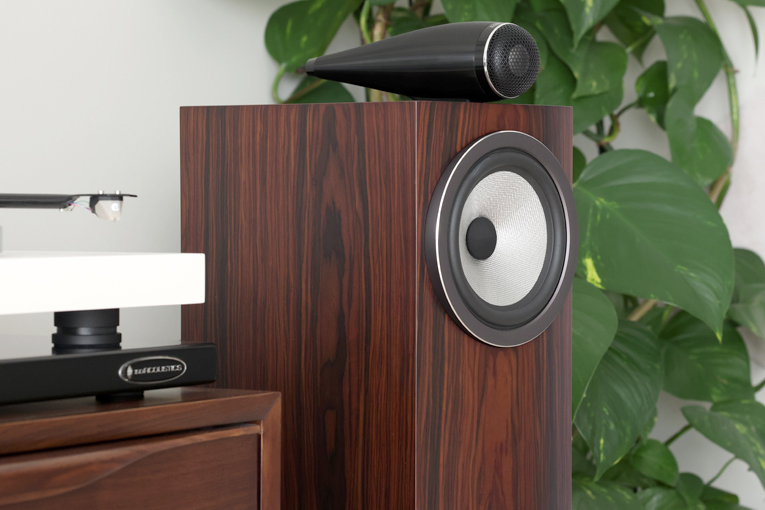
To learn more about the tonality and dynamics of the speakers, I pulled out my 41-year-old vinyl copy of George Winston’s Winter into Spring (Windham Hill Records 91019), a solo piano recording released in 1982, the year I graduated from high school. I played all of side 1, and was wowed by how the 705 S3s reproduced it, despite the abundance of surface noise and crackles. Right from the needle drop, those flaws were a little more prominent than I’m used to. So were the higher-register key strikes that open “January Stars,” probably because of the turned-up treble. But man, did those notes sound incisive and clean. The sound sprung completely free from the enclosures, making these small speakers sound really spacious in my room.
The three pieces that follow—“February Sea,” “Ocean Waves,” and “Reflection”—are more somber in tone and, correspondingly, have more middle and low notes. On these tracks, I was startled by how powerfully and cleanly these small speakers reproduced Winston’s piano—loudly when called upon, with ample power in the lower register. Again, I was impressed by how divorced the sound of the piano was from the enclosures, and how completely it filled my room. I also admired the precise placement of individual notes and chords on the soundstage—I could practically see Winston’s fingers strike each key.
The speakers’ imaging prowess was demonstrated again when I streamed Bruce Cockburn’s “Pacing the Cage” from his 1996 album, The Charity of Night (16-bit/44.1kHz FLAC, True North Records / Tidal). Regardless of the volume level, Cockburn’s powerful baritone voice was spotlit in the center. For a while, I played this track at higher-than-normal volume because I wanted to hear if the B&Ws’ tweeters would exacerbate sibilance—they did, but just a bit. What struck me more was how clear and present Cockburn’s voice sounded, and how well I could hear Rob Wasserman’s bass—not the full heft of it, but more heft than I thought standmounts this small could muster.
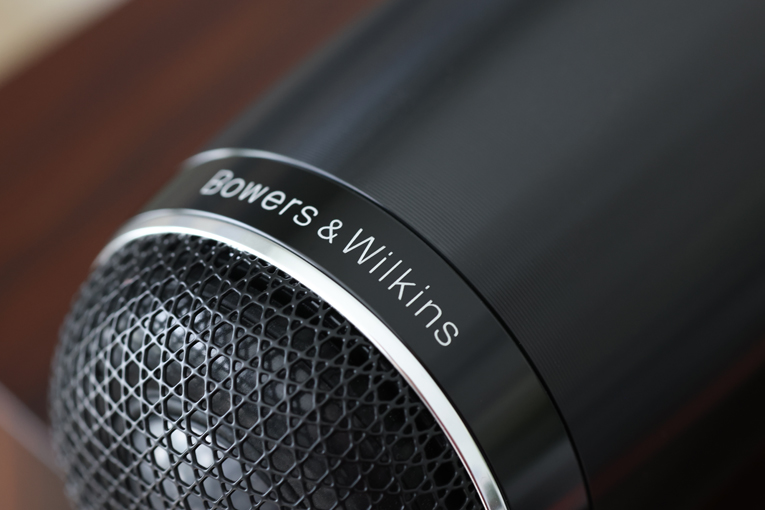
This encouraged me to stream one more Cockburn track: “Bardo Rush,” from his newest album, the all-instrumental Crowing Ignites (16/44.1 FLAC, True North Records / Tidal), released in 2019. On this tune, Cockburn’s acoustic guitar takes center stage as prominently as his voice does on “Pacing the Cage.” The close miking was obvious through the 705 S3s, which reproduced the power of the instrument with great clarity, and placed it precisely on the soundstage. The raised treble of the S3s wasn’t that noticeable on this track, though the highs certainly sounded lively. As with “Pacing the Cage,” the deep bass sounds were remarkable for speakers so small. On this track, Bo Carper plays shakers, which were easy to pick out in the mix in terms of sound and placement on the soundstage. All in all, the 705 S3s let me hear everything in the recording—except for the lowest bass frequencies—with exceptional clarity.
Conclusion
Aesthetically, I was taken by the 705 S3’s strikingly modern design and the beautiful look of the Mocha finish in my room. I also admired the top-shelf build quality. Without question, Bowers & Wilkins knows how to create a finished product worthy of the asking price.
Sonically, I was taken by the 705 S3s’ powerful and punchy bass, super-articulated midband, razor-sharp imaging, and ability to project sound freely from the enclosures. Furthermore, the speakers weren’t bothered by the moderately priced stands I placed them on, nor were they demanding of amplification. But I have to add a cautionary note about the treble, because it’s tipped up compared to what’s broadly considered to be neutral. This appears to be B&W’s house sound these days. But set up the way I had them in my room, with some acoustic treatments on the side walls, the 705 S3s sounded lively and spirited, but not too bright. I could certainly live with a pair in my living room—and did for some time—because I grew to like the incisive sound they put forth.
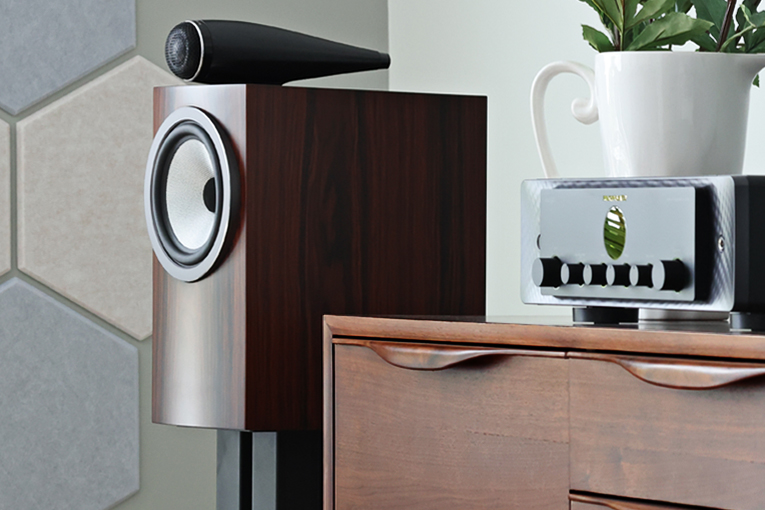
Don’t take my word as gospel, however. If you’re thinking about buying these speakers, you have to listen to a pair of S3s to know if the sound is to your liking or not. If not, carry on shopping, because great looks and build quality aren’t enough to justify a serious hi-fi purchase. But if you like what you hear, a pair of 705 S3s will be well worth the money.
. . . Doug Schneider
das@soundstagenetwork.com
Associated Equipment
- Turntable: Pro-Ject Audio Systems X1 with Pick it S2 cartridge and Connect it E cable.
- Integrated amplifier: Marantz 40n.
- Speaker cables: QED XT25.
- Speaker stands: Monoprice Monolith 24″.
- Acoustical treatment: BXI Sound Absorber panels (20).
Bowers & Wilkins 705 S3 Loudspeaker
Price: $3400 per pair.
Warranty: Five years, parts and labor.
Bowers & Wilkins
B&W Group
Dale Road
Worthing BN11 2BH
United Kingdom
Phone: +44 (0)1903-221800
Bowers & Wilkins North America
5541 Fermi Court
Carlsbad, California 92008
Phone: (800) 370-3740
Email: info@bwgroup.com
Website: www.bowers-wilkins.com






















